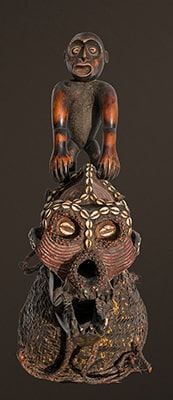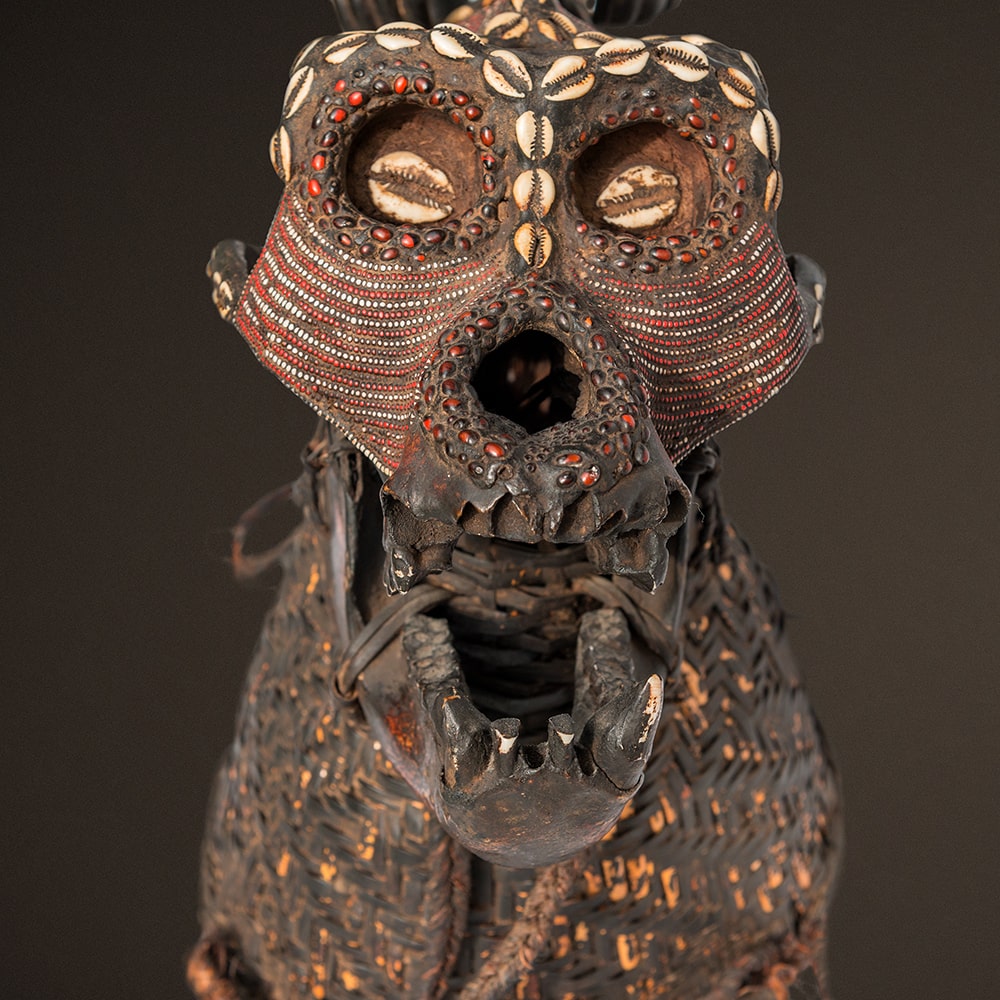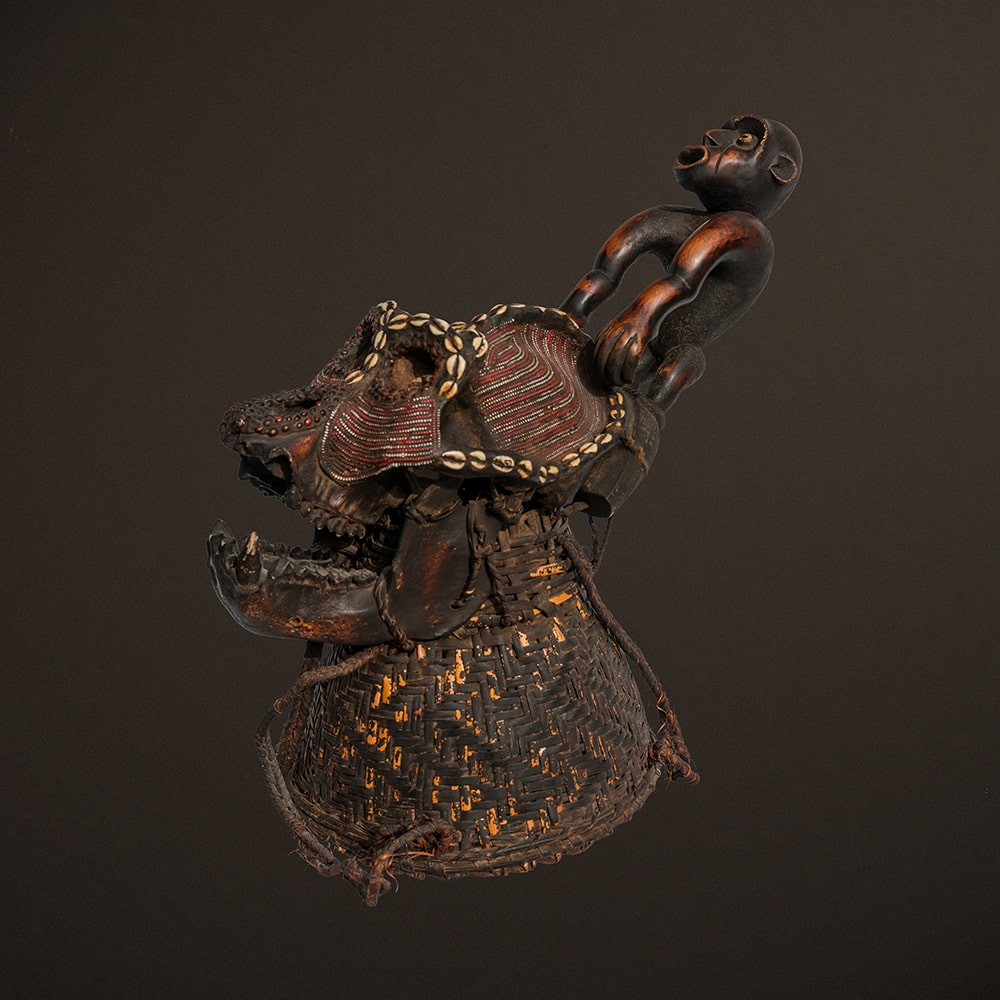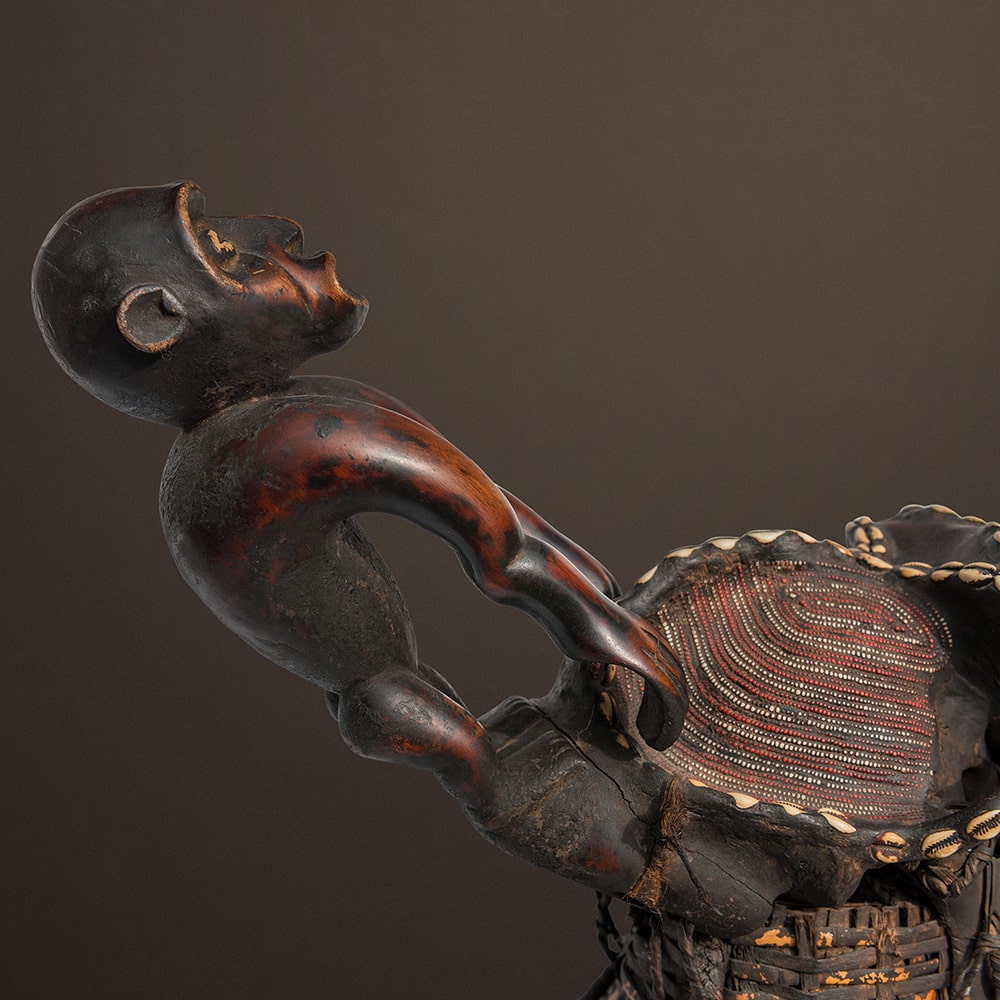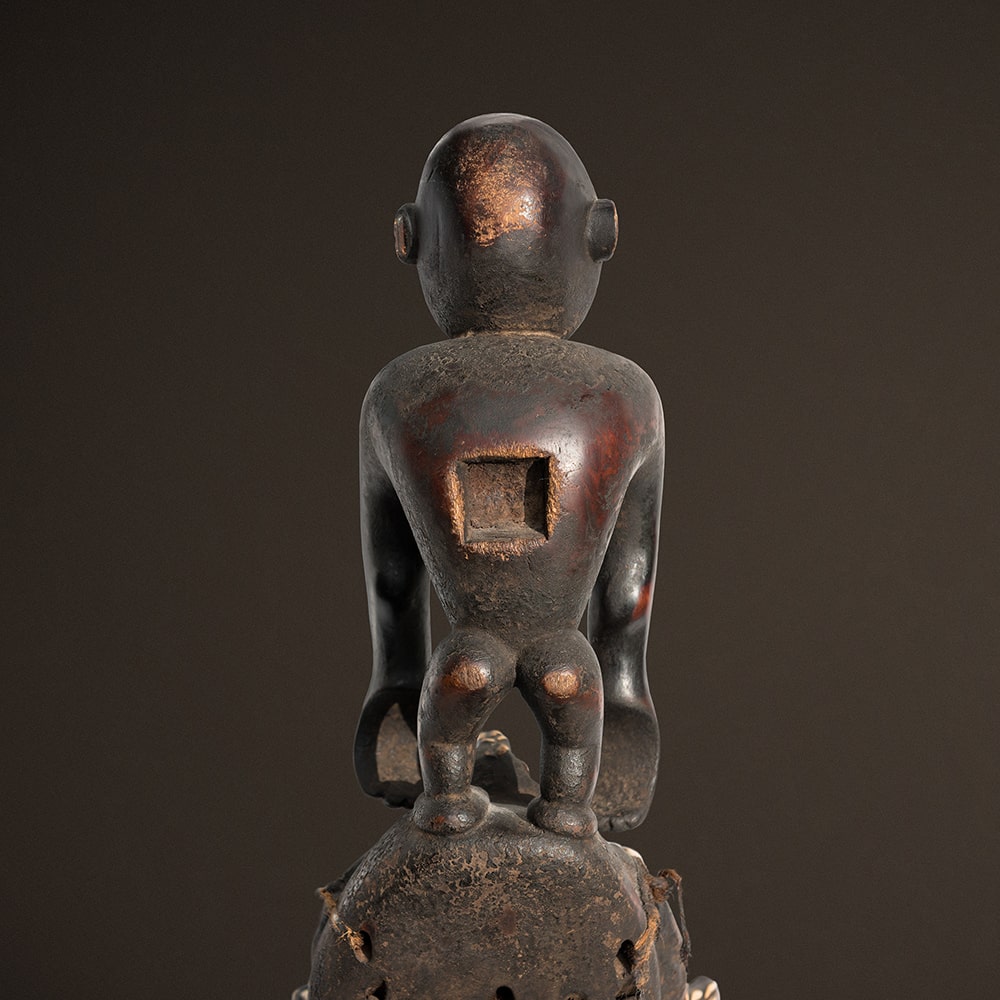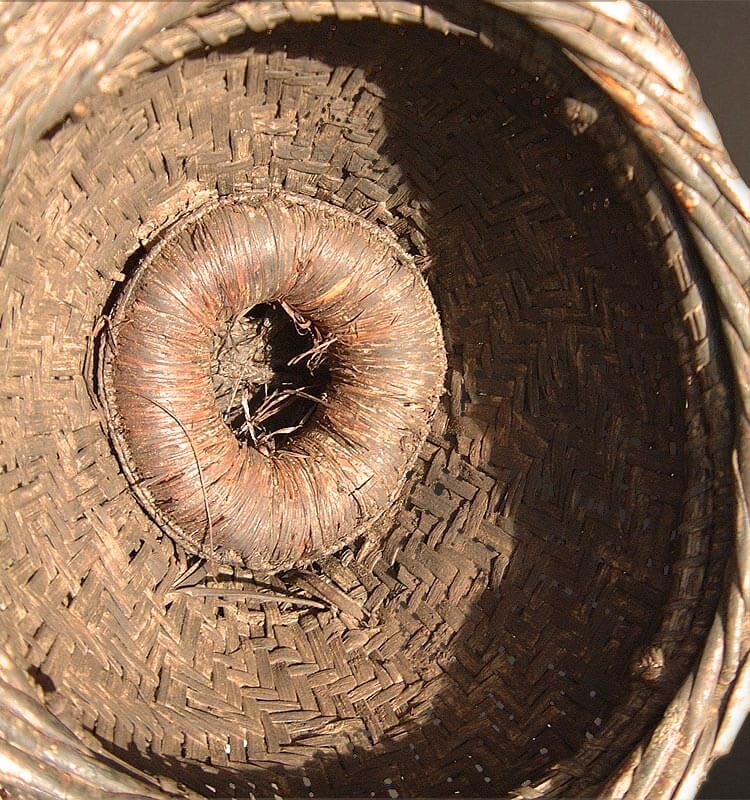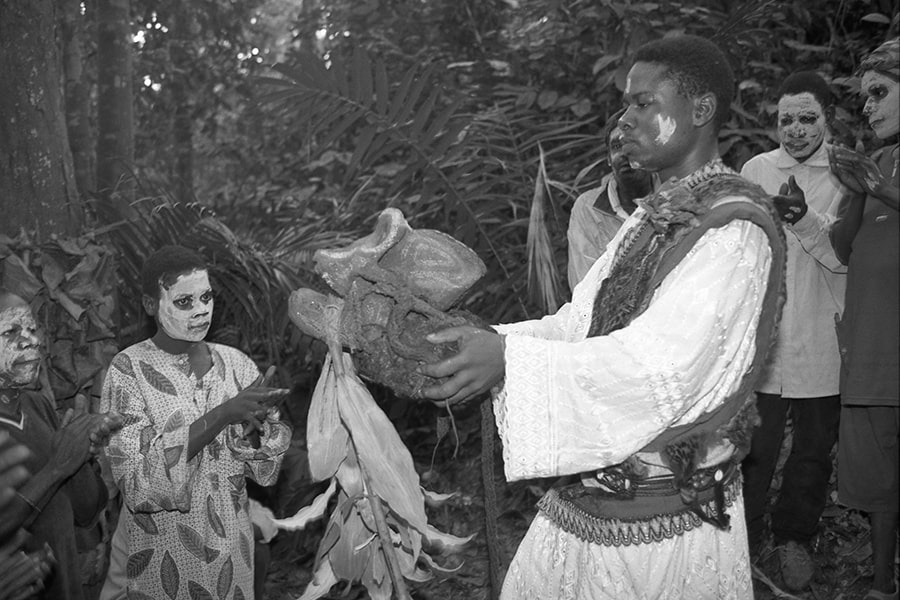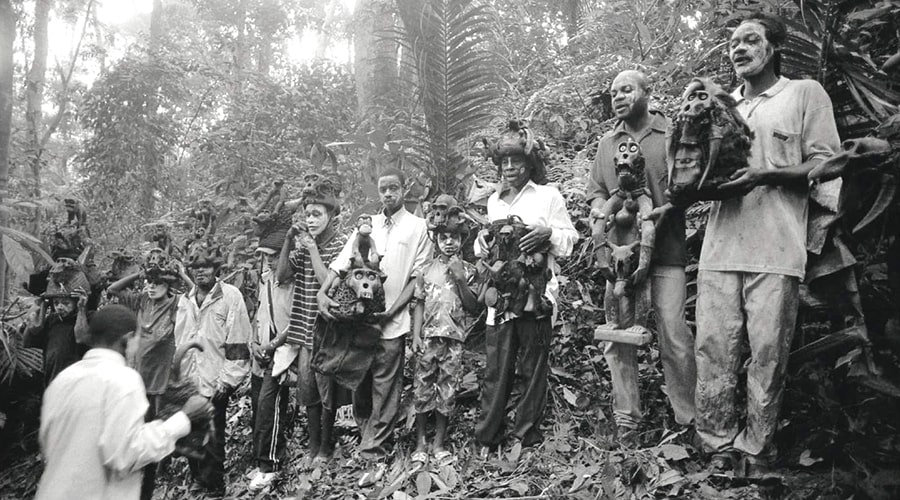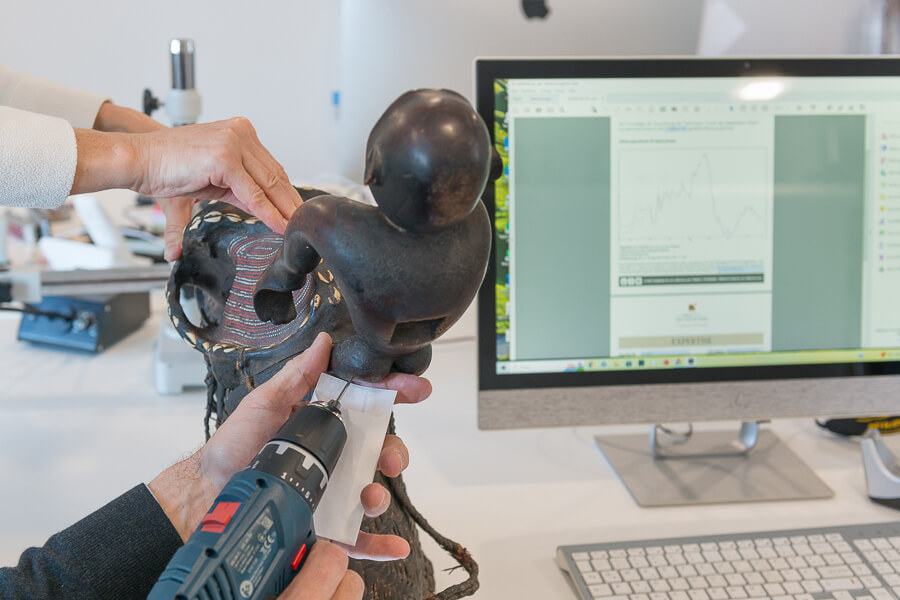The Bulu, sometimes spelled Boulou, is one of several related ethnic groups living in the forested south–central region of Cameroon, mainland Equatorial Guinea, and northern Gabon. Together, these peoples are called the Fang. The name Bulu is a loosely defined term for one of the three major subgroups of the Fang, with Fong being one of the Bulu tribes.
The Ngui Secret Society (also Ngil or Ngi Secret Society) is also known as the Gorilla Society because members wore gorilla masks during their ceremonies. Only the Fong used masks with a real skull for this purpose, with the gorilla being worshipped by them as a sacred animal (deity of fire). Other Fang ethnic groups used stylized wooden masks during the ceremonies of the Gorilla Society, such as the famous white Ngil mask of the Fang: WIKIPEDIA or LUEBECKER MUSEEN.
The Ngui secret society has probably been operating in secret for many centuries. As a guardian of order and morality, it intervened in all customs and main aspects of social life, punished evildoers, and protected against witchcraft and evil spirits. The Society members sometimes had more power than some chieftain or king. One can well imagine that such a secret organization under the sign of the “Sacred Gorilla“ was a thorn in the side of the colonial powers and was therefore consistently fought against. In 1910, the Ngui Secret Society and its traditions were outlawed by the French colonial administration.
Just before, in the years 1907 to 1909, the German ethnologist Günther Tessmann led an expedition to the southern part of Cameroon and Equatorial Guinea on behalf of the Lübeck Ethnological Museum to study the Pangwe people (now known as Fang). His expedition report from 1913 provided a thorough examination of the Pangwe (Fang) culture and is considered Tessmann's most significant work, in which he described the Ngui Society for the only and last time. Tessmann wanted to deepen his knowledge about the Gorilla Secret Society later on and searched for it again in the rainforests of Cameroon in 1910, but to no avail. After that, all knowledge of the Society vanished and the cult has since been deemed extinct.
However, it does not necessarily mean that something that cannot be found does not exist – especially if it is being kept a secret. An excellent example of this is the Ngui Secret Society, which was rediscovered as a fully functioning and intact cult a whole century later.
The ethnographer and photographer Henning Christoph rediscovered one of these Secret Societies in the forests of southwestern Cameroon in 2008. Christoph wrote in his diary: "From an ethnological perspective, I stumbled upon a sensation. As the first researcher, I was able to witness and photograph a ceremony that had been believed to be extinct for 100 years and had not yet been documented. Thus, I was able to create the only evidence that this Secret Society existed and still exists".
As described earlier by Tessmann, the rediscovered Ngui Society intervenes in the lives of the Fong protectively or – most of the time – punitively, and is regarded by them as a feared guardian of morals and overseer of divine law. However, the most important role of Ngui is the fight against witchcraft and harmful spells. Rituals are conducted both privately among Society members and publicly. During public rituals, it is rare for outsiders to know the specific roles of participants. The Ngui Secret Society of the Bulu–Fong is only active in a small region encompassing around 30 villages.
